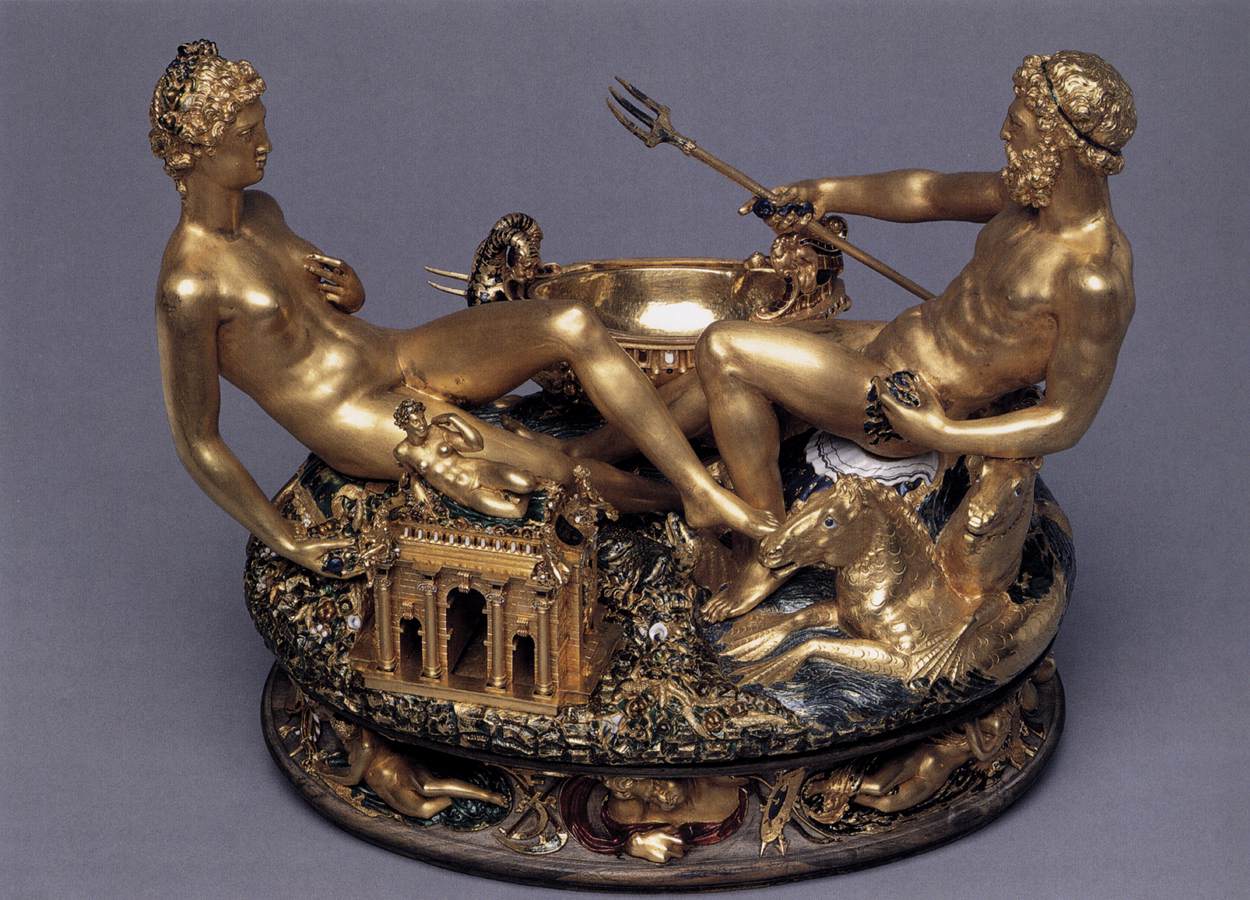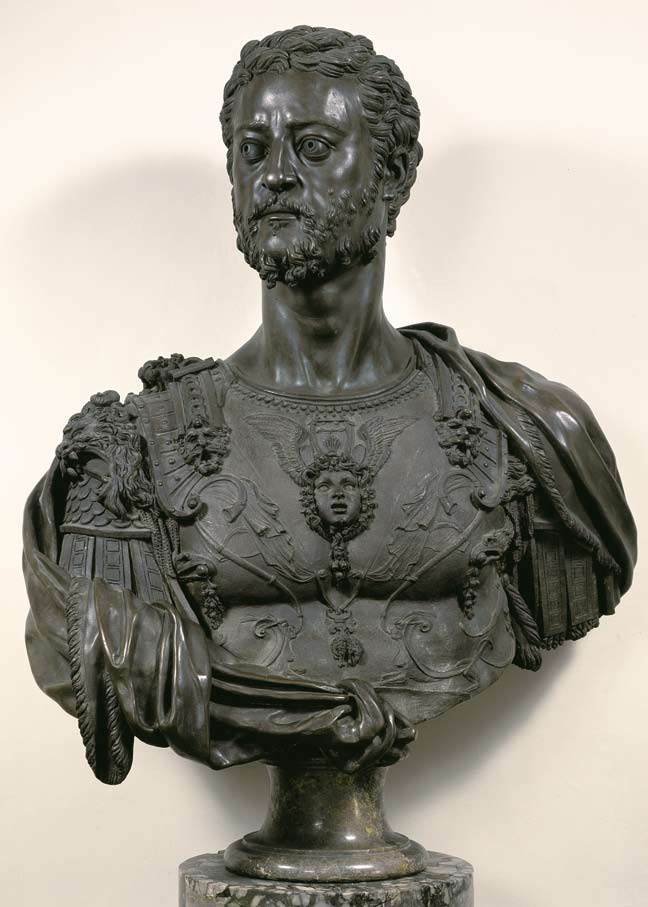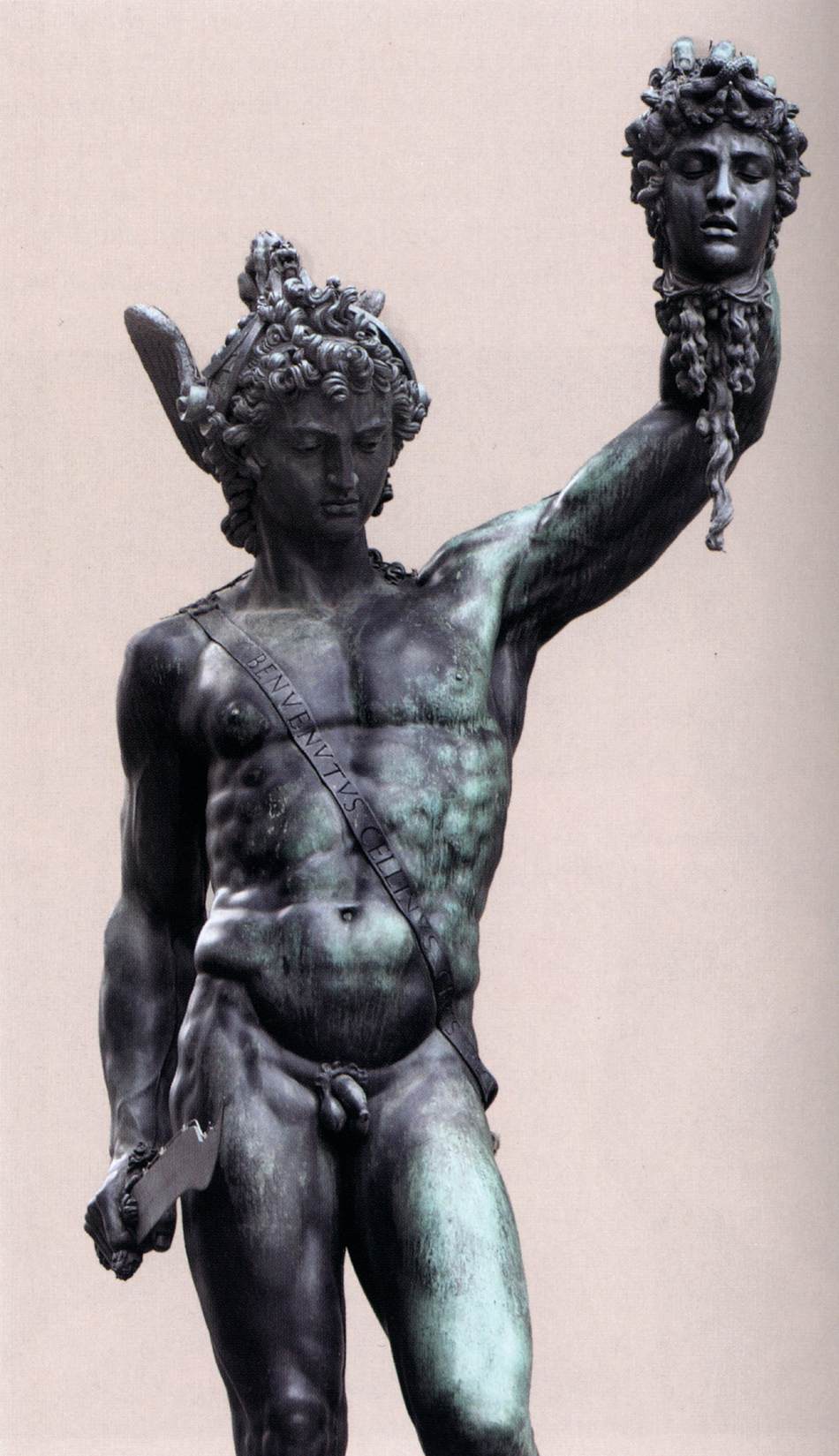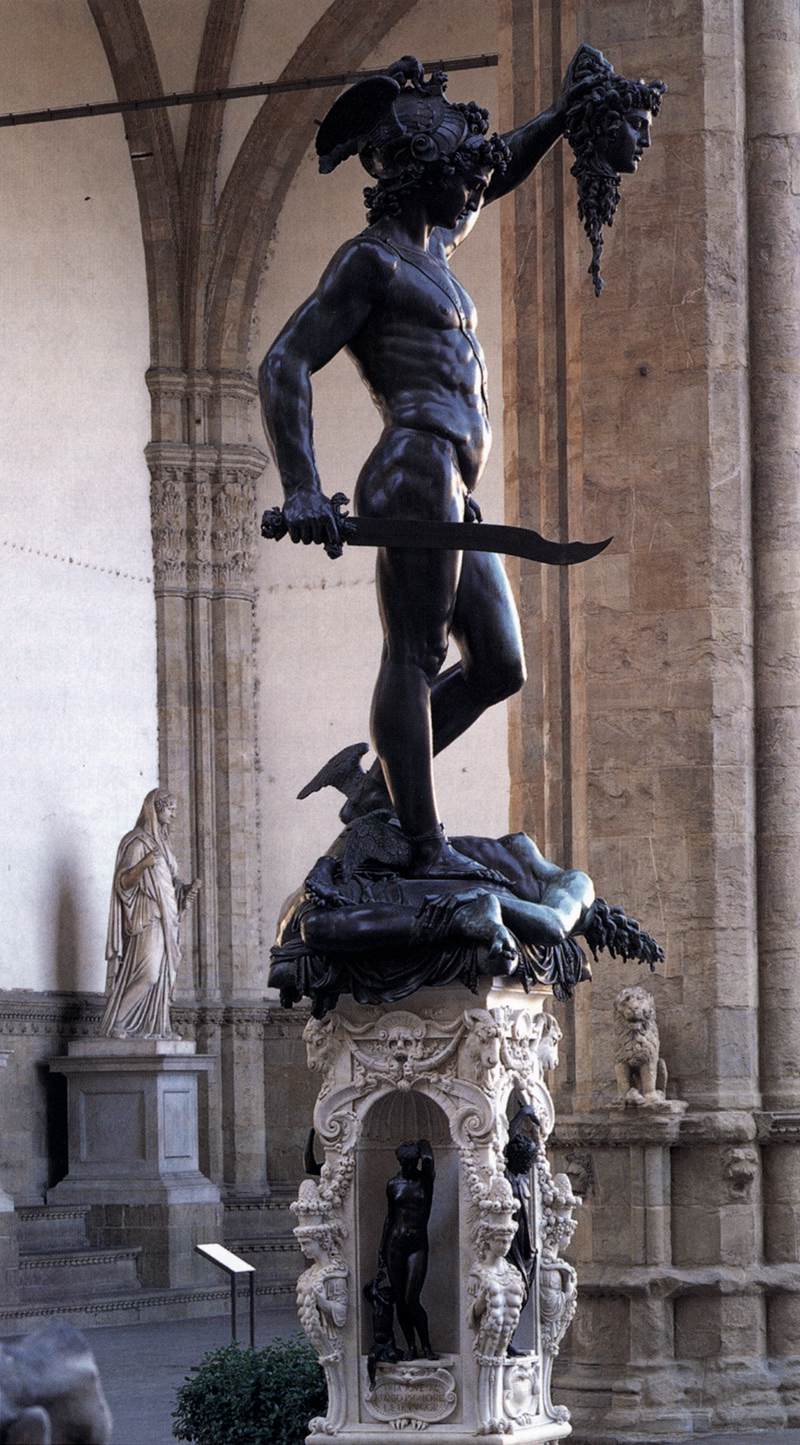“Al ladro, al ladro!” (Stop thief!): on 16 October 1538 famous Renaissance goldsmith Benvenuto Cellini (1500-1571) was arrested on the charge of having stolen jewels from the papal treasury during the tragic days of the Sack of Rome. Imprisoned in Castel Sant’Angelo, he managed to escape; recaptured, he was set free thanks to the intervention of Cardinal Ippolito d’Este, one of his patrons.
This adventure was only one of the many which marked Benvenuto’s reckless life. His troubles started at age 16, when the artist was banished from his hometown of Florence following a brawl. Allowed to return to the city after a few months, he argued with his family and left again, settling in Pisa and then in Rome. A temporary decline in patronage led him to return, but he was persecuted for sodomy and forced to flee after a fight with members of the Guasconti family of goldsmiths. He returned to Rome, where he became extremely successful at the papal court; but the shocking Sack of Rome of May 1527 quickly put an end to his happiness.
Reconciled with his family in Florence, he left following an outbreak of plague that killed his father. His return to the city was followed by the violent death of his brother Cecchino; having killed the assassin and attacked a notary, Benvenuto escaped to Naples. Here he murdered the goldsmith Pompeo de’ Capitaneis, who had slandered him at the papal court. Pardoned by the newly elected pope Paul III, he was nevertheless persecuted by the pope’s illegitimate son, the powerful Pier Luigi Farnese, and returned to Florence, where he entered the service of Alessandro de’ Medici. Unhappy with the situation, he traveled to Paris, where he met his future savior Cardinal Ippolito d’Este.
After being imprisoned and released by Cardinal Ippolito, Benvenuto returned to France and was welcomed by King Francis I, who assigned him the château of the Petit Nesle as residence and workshop. Benvenuto’s ambition led him to accept as many eminent commissions as he could find, regardless of the actual possibilities of his workshop. This caused jealousy and friction with other court artists, and he was unjustly accused of having stolen part of the silver entrusted to him to make candlesticks for the King’s household.
Returning to Florence, Benvenuto declared his allegiance to Duke Cosimo I in his villa at Poggio a Caiano, and thus ensured Medici protection and patronage for the following year. Although his refusal to get involved with ducal bureaucracy and his rivalry with Baccio Bandinelli prevented him from realizing several of his most ambitious designs, his undisputed masterpiece, Perseus with the Head of Medusa, was unveiled on the Loggia dei Lanzi in April 1554 and received with enthusiasm and critical acclaim.
The following years were marked by quarrels with the Medici administration over the payment of his works. In 1556 he struck the fellow goldsmith Giovanni di Lorenzo Papi on the head and was imprisoned for more than two months. One year later, he was charged with sodomy and held under house arrest, a sad circumstance of which he made the most by writing his engrossing autobiography, Vita di Benvenuto Cellini.
From this point onward, Cellini was relegated to the sidelines by strained relationships with the Dukes, and increasing artistic competition from such artists as Bartolomeo Ammanati, Giambologna, Vincenzo Danti and especially Giorgio Vasari. His life remained restless: he fathered many legitimate and illegitimate sons, fell prey to an expensive passion for gambling, received and renounced religious orders, and married his housekeeper before dying at age 70 in February 1571.
Reference: Alessandro Nova. “Cellini, Benvenuto.” Grove Art Online. Oxford Art Online. Oxford University Press.
Further reading: The Autobiography of Benvenuto Cellini (1999); Cellini and the Principles of Sculpture by Michael W. Cole (2002)
Salt Cellar, 1540-44, gold, enamel and ebony, Kunsthistorisches Museum, Vienna
Bust of Cosimo I, 1546-47, bronze, Museo Nazionale del Bargello, Florence
Perseus, 1545-54, bronze, Loggia dei Lanzi, Florence





